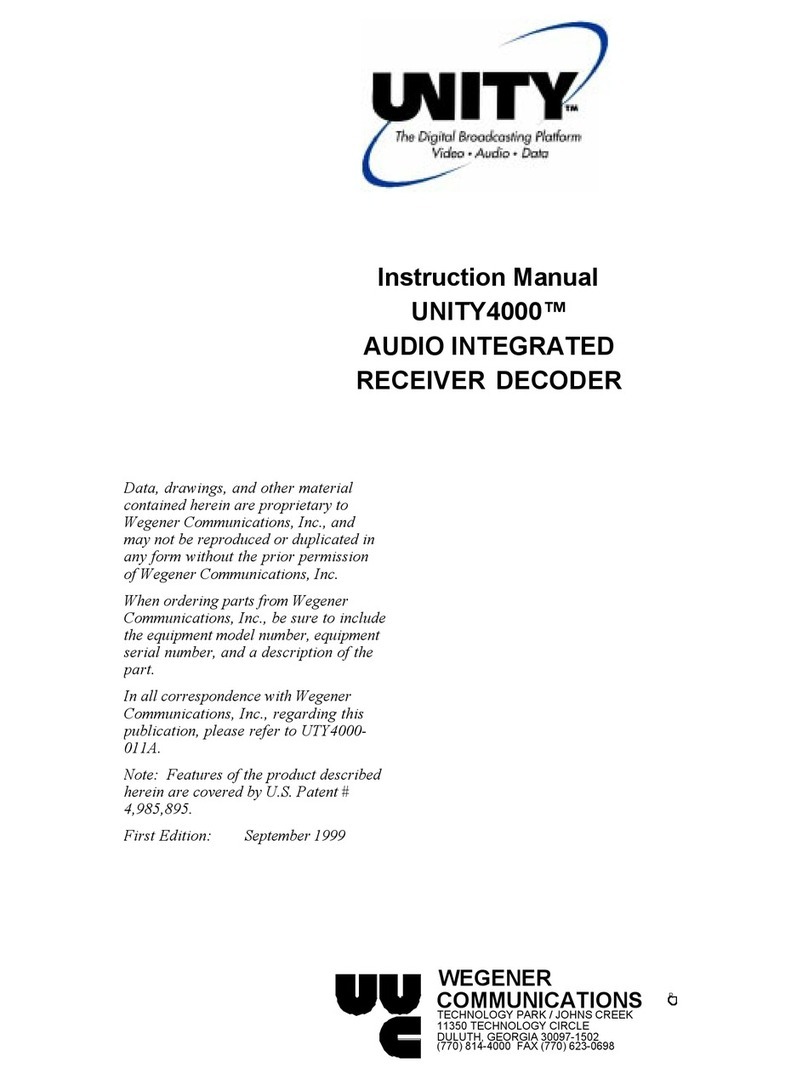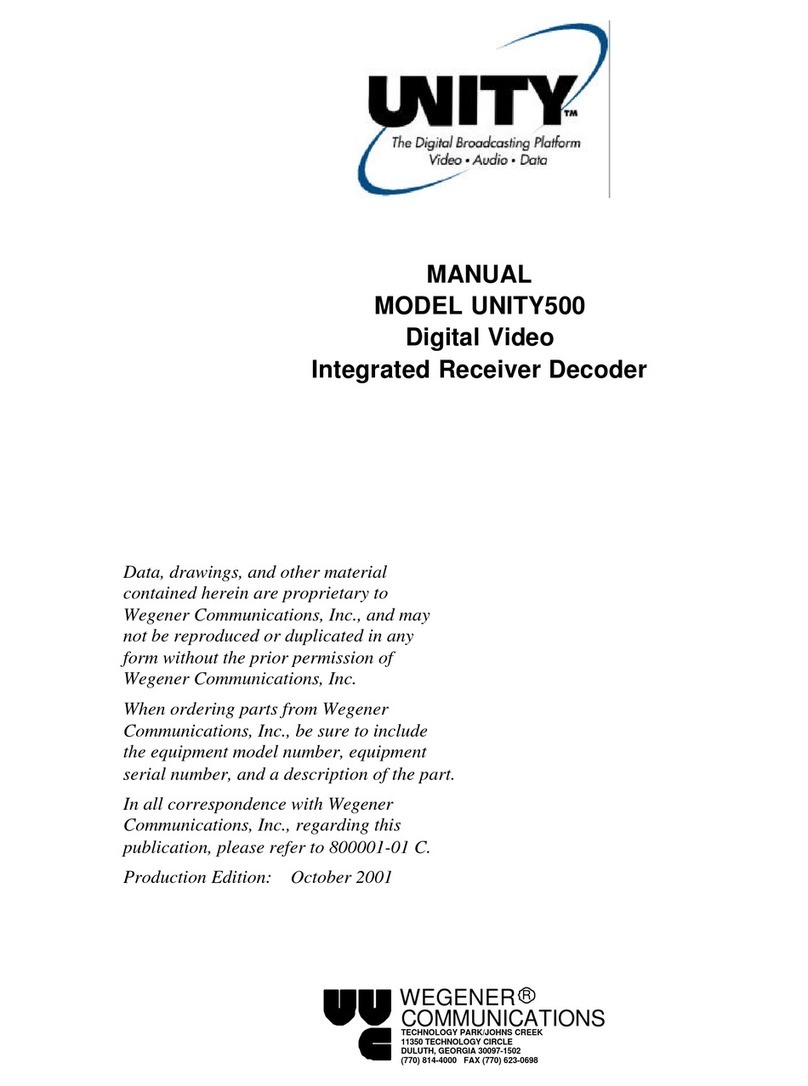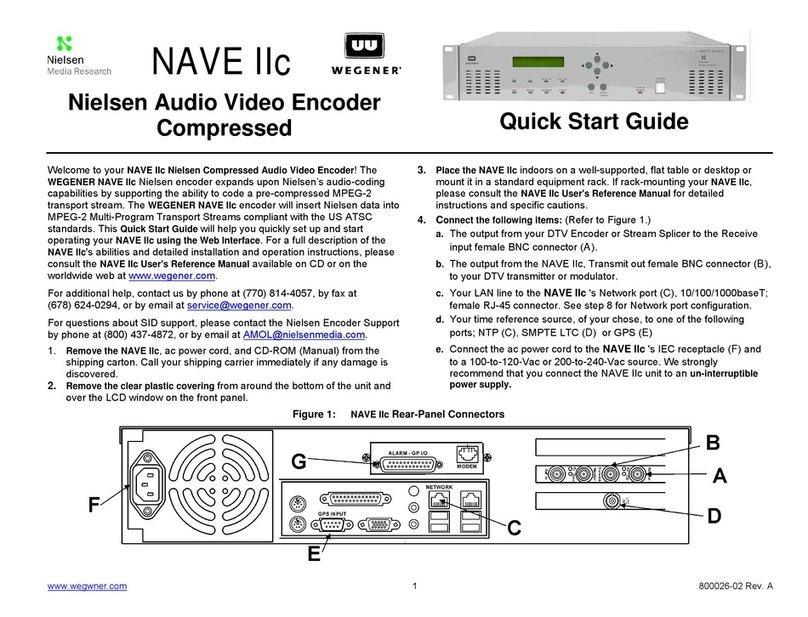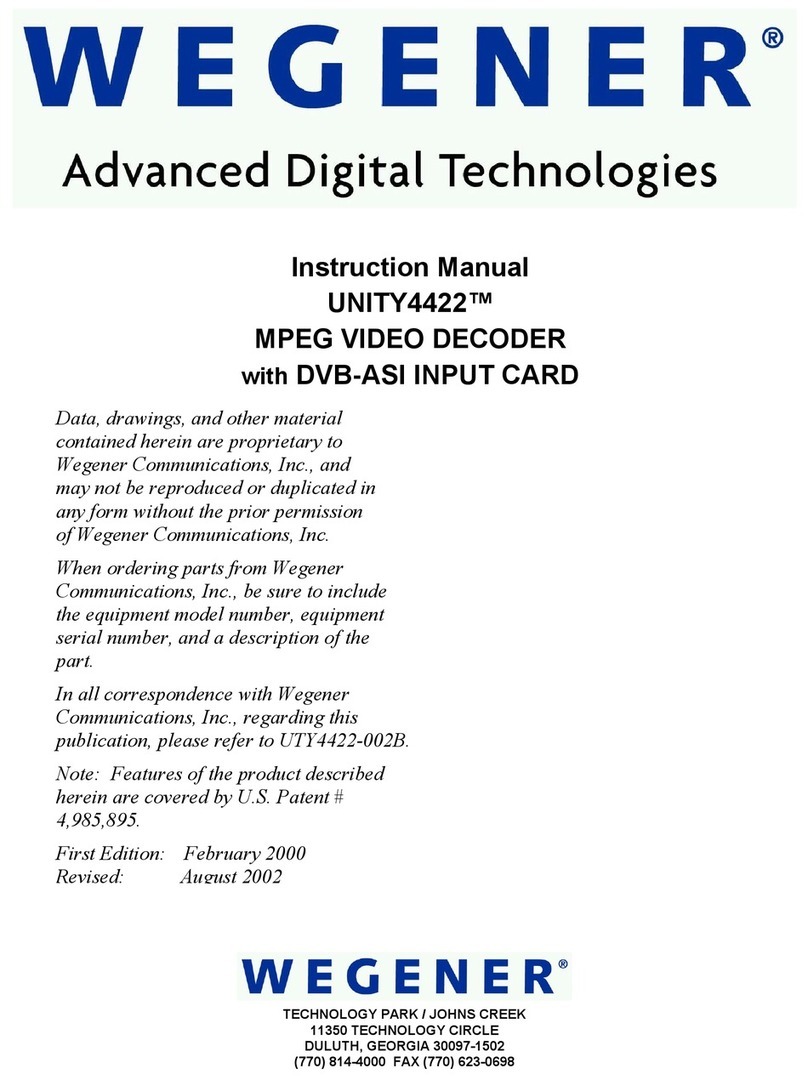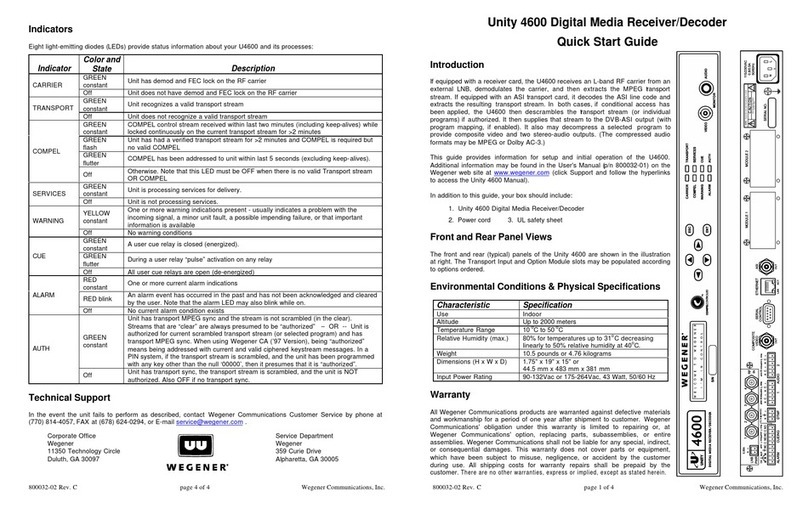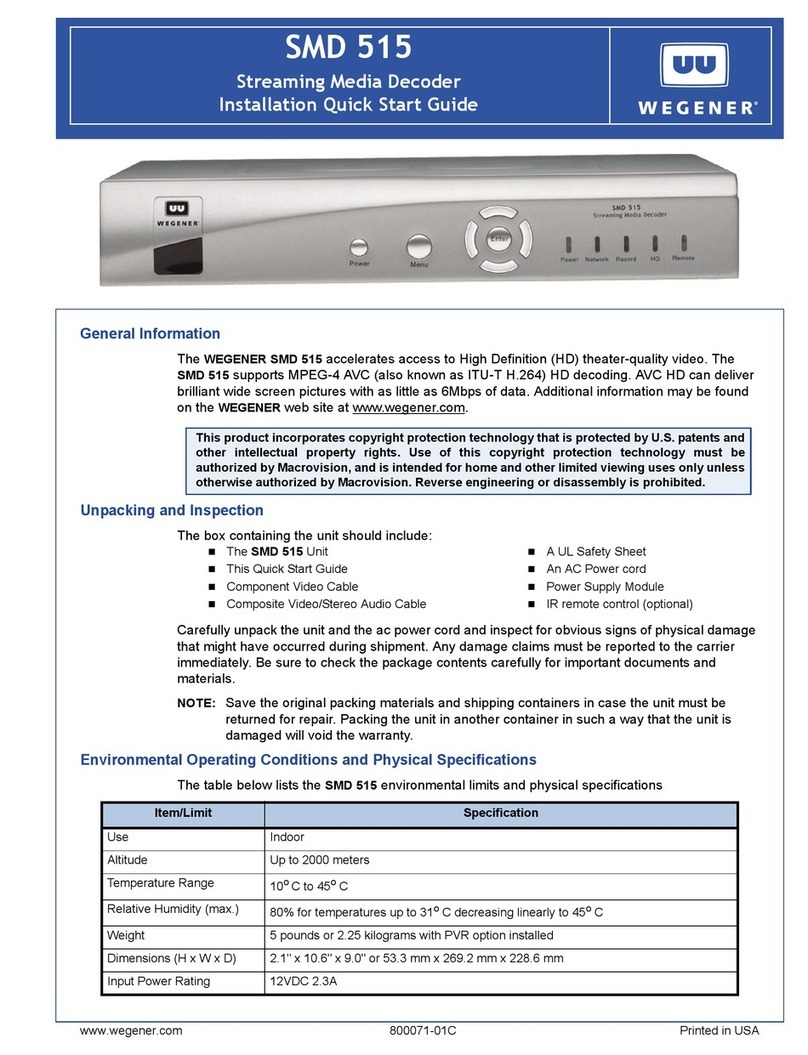
vii UTY4000-003
Table of Contents (continued)
Paragraph Title Page #
3.7.2 Aux Data Device................................................................ 3-7
3.8 Receiver Functions......................................................................... 3-7
3.8.1 Perms, Temps, Searching & Settings................................ 3-7
3.8.2 Settings Table (or Search Table) ...................................... 3-9
3.8.3 Signal Quality Monitoring................................................... 3-9
3.8.4 Frequency Tagging ........................................................... 3-9
3.9 Display / Push Buttons.................................................................... 3-10
3.9.1 Overview............................................................................ 3-10
3.9.2 Push Button Functions....................................................... 3-11
3.9.3 E-mail ................................................................................ 3-14
Appendix A - Terminal / Modem Commands
A1.0 Status Commands .......................................................................... A-1
A1.0.1 H (Help)............................................................................ A-1
A1.0.2 R (Report) ........................................................................ A-2
A1.1 Control Commands......................................................................... A-2
A1.1.1 ABORT............................................................................. A-2
A1.1.2 ADDS ............................................................................... A-2
A1.1.3 DELS ............................................................................... A-2
A1.1.4 MUTE............................................................................... A-2
A1.1.5 OH.................................................................................... A-3
A1.1.6 PC .................................................................................... A-3
A1.1.7 PERM............................................................................... A-3
A1.1.8 PERMCH.......................................................................... A-3
A1.1.9 PW ................................................................................... A-3
A1.1.0 RE .................................................................................... A-3
A1.1.11 SETAUDIO ...................................................................... A-4
A1.1.12 SETLNB .......................................................................... A-4
A1.1.13 SETTIMEOUT ................................................................. A-4
A1.1.14 SNR ................................................................................. A-5
A1.1.15 TEMP ............................................................................... A-5
A1.1.16 TEMPCH ......................................................................... A-5
A1.1.17 UNMUTE.......................................................................... A-5
Appendix B – Front Panel Display
B1.0 Home Screen............................................................................................ B-1
B1.1 Email ......................................................................................................... B-1
B1.2 Hardware Setup ...................................................................................... B-2












